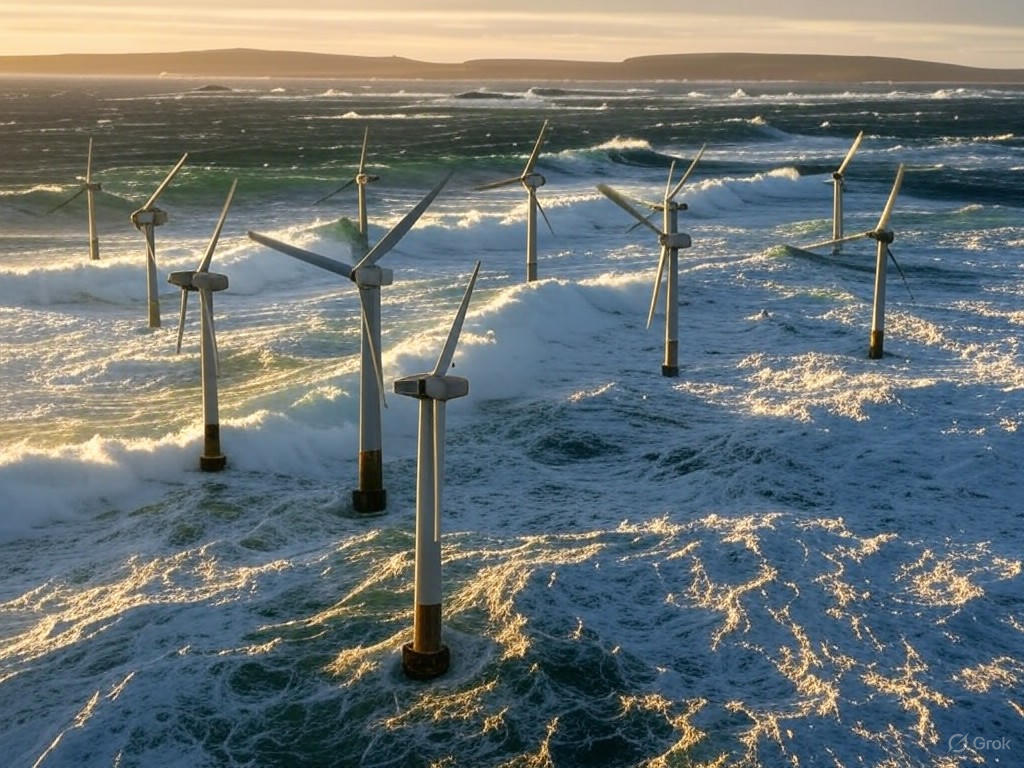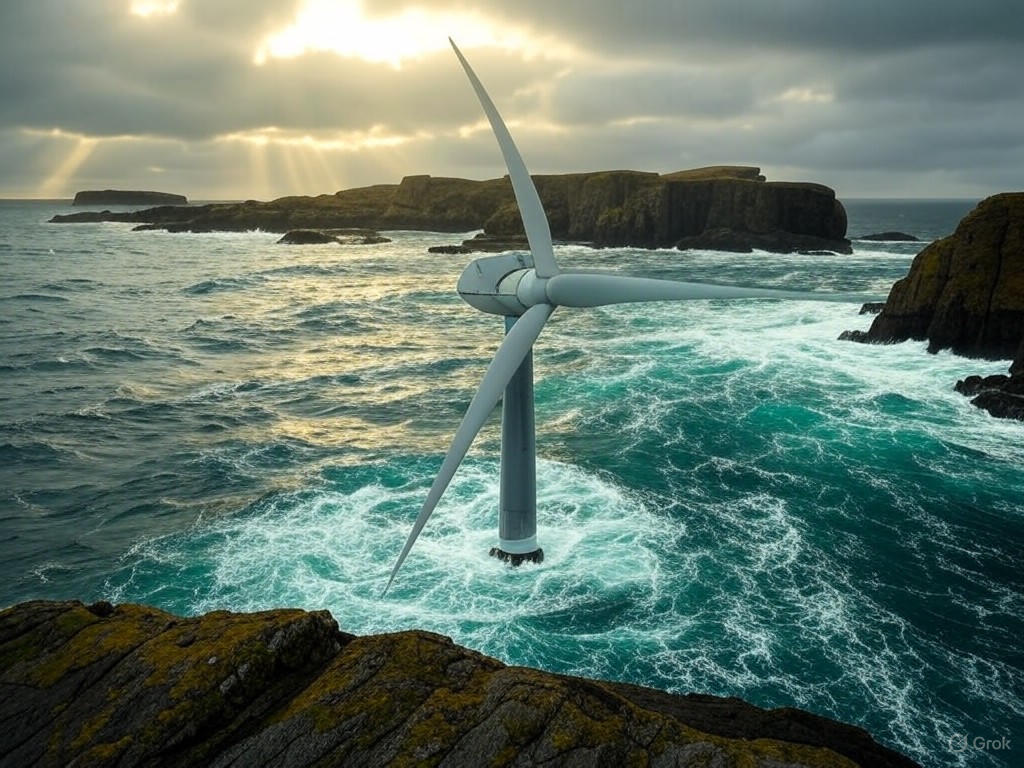Tidal Energy in Scotland: Ocean Power
In the vast, untamed expanse of the ocean, where waves whisper secrets of time and eternity, humanity has long sought to harness the rhythms of nature without disrupting its sacred balance. Scotland, with its rugged coastlines and storied history of resilience, now stands at the forefront of this endeavor through advancements in tidal energy. As a nation that cherishes its traditions and the unyielding spirit of enterprise, Scotland's strides in converting ocean power into sustainable electricity offer a beacon of hope—not through grandiose government mandates, but through the steady hand of innovation and free-market ingenuity. Yet, as we reflect on this progress, we must guard against the temptations of excessive intervention, ensuring that the pursuit of renewable energy aligns with principles of economic prudence and individual responsibility.
This editorial explores Scotland's tidal energy developments as a model of sustainable progress, one that emphasizes market-driven solutions over centralized control. While the potential for cleaner energy sources is undeniable, true advancement lies in fostering private investment and minimizing regulatory burdens—values that echo the center-right ethos of limited government and respect for tradition. Through careful analysis, evidence from ongoing projects, and a balanced view of challenges, we will see how tidal energy could chart a course toward a more sustainable future, guided by the invisible hand rather than the heavy fist of policy.
The Ocean's Eternal Pulse: Understanding Tidal Energy in Scotland
Tidal energy, derived from the gravitational pull of the moon and sun on the Earth's oceans, represents a renewable resource as predictable as the changing seasons. Unlike intermittent sources such as wind or solar, tidal patterns follow a reliable cycle, offering a steady stream of power that could stabilize electrical grids without the volatility of subsidies or mandates. In Scotland, this potential has been nurtured through initiatives like the MeyGen project in the Pentland Firth, where underwater turbines capture the forceful tides to generate electricity for thousands of homes.
Scotland's embrace of tidal energy is not merely a technological feat; it is a testament to the nation's historical ingenuity, from its shipbuilders to its innovators. According to a detailed report from the IEEE, tidal energy could provide up to 20% of the United Kingdom's electricity needs by 2050, with Scotland leading the charge due to its advantageous geography IEEE Spectrum on Tidal Energy Advances. This progress has been driven largely by private partnerships, such as those between energy firms like SIMEC Atlantis Energy and local investors, demonstrating how free-market dynamics can spur innovation without relying on expansive government programs.
Yet, as we delve deeper, we must consider the broader implications for sustainability. The keyword here is balance: harnessing the ocean's power while preserving its ecological integrity. Traditional values, such as stewardship of the natural world, remind us that unchecked exploitation could disrupt marine life and coastal communities. A center-right perspective applauds Scotland's approach, where private entities bear the risks and rewards, encouraging efficiency and accountability rather than blanket regulations that stifle growth.

Underwater turbines sway with the tides in Scotland's Pentland Firth, symbolizing the harmonious blend of human innovation and natural rhythm.
Evidence of Progress: Economic and Environmental Gains
The evidence supporting Scotland's tidal energy advancements is both compelling and grounded in real-world outcomes. Projects like the EMEC (European Marine Energy Centre) in Orkney have demonstrated that tidal energy can produce electricity at competitive costs, with initial installations already contributing to the national grid. A study from the World Economic Forum highlights that for every dollar invested in marine renewables, there is a potential return of up to three dollars in economic activity, primarily through job creation in engineering and maintenance sectors World Economic Forum on Marine Renewables.
From an environmental standpoint, tidal energy aligns with the principles of sustainability by emitting no greenhouse gases and requiring minimal land use. Unlike some renewable technologies that demand vast solar farms or wind turbine arrays, tidal systems operate submerged, preserving scenic landscapes and traditional ways of life. This discreet integration resonates with center-right values, emphasizing practical, market-based solutions that enhance energy security without imposing ideological shifts on society.
However, we must acknowledge the challenges. The initial capital costs for tidal infrastructure are high, often exceeding those of wind or solar due to the harsh marine environment. Critics argue that without targeted incentives, private investors might shy away, potentially slowing progress. Yet, a free-market lens reveals opportunity: as seen in the Wall Street Journal's coverage of global energy transitions, competitive bidding and international partnerships—such as Scotland's collaborations with Norwegian firms—can drive down costs through innovation rather than subsidies Wall Street Journal on Renewable Energy Investments. This approach fosters resilience, allowing the market to self-correct and adapt, much like the tides themselves.
In balancing these gains, Scotland's model underscores the importance of limited government intervention. Rather than expansive federal programs, the focus has been on streamlined regulations and public-private partnerships, ensuring that traditional values like fiscal responsibility prevail. For instance, the U.K.'s Contracts for Difference scheme, which guarantees a fixed price for generated electricity, has been critiqued for its government backing, but in Scotland's case, it has been applied judiciously to catalyze private investment without creating dependency.

A detailed map of Scotland's coastline marks key tidal energy sites, illustrating the strategic harnessing of ocean forces for national benefit.
Navigating Challenges: A Call for Prudent Innovation
No discussion of renewable energy is complete without addressing potential pitfalls, and tidal energy is no exception. The technology's reliance on specific geographic conditions limits its scalability, with only certain regions like Scotland's firths benefiting directly. Moreover, environmental concerns—such as the impact on fish migration or seabed disruption—demand rigorous, independent assessments. From a center-right viewpoint, these issues highlight the need for market signals over mandates; private firms, accountable to shareholders and stakeholders, are more likely to innovate solutions than bureaucracies entangled in red tape.
A report from the International Energy Agency emphasizes that while tidal energy holds promise, its global deployment will depend on cost reductions driven by competition, not artificial supports International Energy Agency on Ocean Energy. This perspective aligns with traditional values of self-reliance, where communities and businesses collaborate organically, as seen in Scottish fishing villages that have adapted to coexist with tidal installations. By prioritizing free-market principles, we avoid the pitfalls of overregulation, which could burden taxpayers and hinder the very innovation we seek to promote.
In this introspective light, Scotland's advancements serve as a metaphor for broader societal progress: the ocean's tides, ever constant and unyielding, remind us that true sustainability emerges not from imposed ideologies but from the quiet accumulation of effort and enterprise.
Reflections on the Horizon: A Sustainable Legacy
As we conclude, let us reflect on the deeper currents at play. Scotland's tidal energy revolution is more than a technological milestone; it is a poetic affirmation of human potential, where the ancient rhythms of the sea converge with modern ingenuity. By championing free-market solutions and limiting government interference, we honor traditional values of independence and stewardship, ensuring that renewable energy serves as a bridge to a prosperous future rather than a divisive policy battleground.
In the end, the success of tidal energy hinges on our willingness to let innovation flow freely, much like the waters that power it. As Scotland charts this course, it offers a model for the world: one of balanced progress, where sustainability and economic vitality are not at odds but intertwined in the grand tapestry of human endeavor.

